The Equilibrium Potential
Caleb Bevan
Objective 4: Describe how diffusional and electrical forces on ions combine to create an equilibrium potential for that ion.
 The forces operating on charged ions is a complicated topic. You can’t expect to understand it without a bit of effort. But if you put forth that effort, you’ll be rewarded with a deep understanding of the workings of the nervous system.
The forces operating on charged ions is a complicated topic. You can’t expect to understand it without a bit of effort. But if you put forth that effort, you’ll be rewarded with a deep understanding of the workings of the nervous system.
On the other hand, it’s impossible to understand the cellular and molecular biology of the nervous system without getting a good grip on this subject.
In this chapter, we’ll talk about electrical potential energy, which is also known as voltage.
In classical physics, there are two kinds of energy: potential and kinetic. Kinetic energy is the energy of motion. The faster something is moving, the more kinetic energy it has.
On the other hand, potential energy (as the name implies) is energy that has not yet become kinetic. A Pinewood Derby car at the top of a ramp is filled with kinetic energy, until it is released, when the potential energy is turned into kinetic energy.
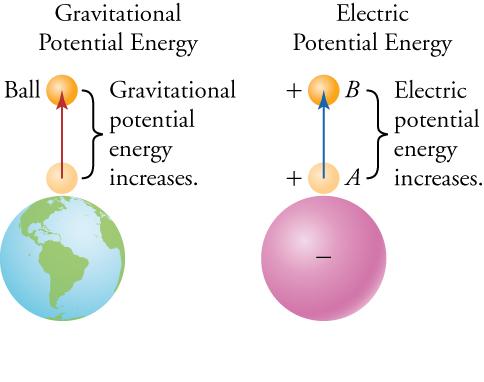 When studying neurons, we are thinking about electrical potential energy. But it might be easier to think of an analogy: gravitational potential energy. When a ball is far away from Earth, it has little potential energy; Earth doesn’t have much gravitational pull at extreme distances. As the ball approaches Earth, the gravitational potential energy increases.
When studying neurons, we are thinking about electrical potential energy. But it might be easier to think of an analogy: gravitational potential energy. When a ball is far away from Earth, it has little potential energy; Earth doesn’t have much gravitational pull at extreme distances. As the ball approaches Earth, the gravitational potential energy increases.
Now imagine two charged particles with opposite charges: the “Earth” is negatively charged, and the “ball” is positively charged. When the positive charge is far away from the negative charge, it has little potential energy, but as it gets closer, the attractive force between the two becomes stronger and electrical potential increases.
Now let’s expand this simple model into a more complex one that represents how the neuronal membrane actually works.
Let’s break our model down into digestible pieces, then put it back together into a complete understanding.
For this section, we’ll just focus on sodium ions (Na+) and potassium ions (K+). Both are cations (i.e. positively-charged ions).
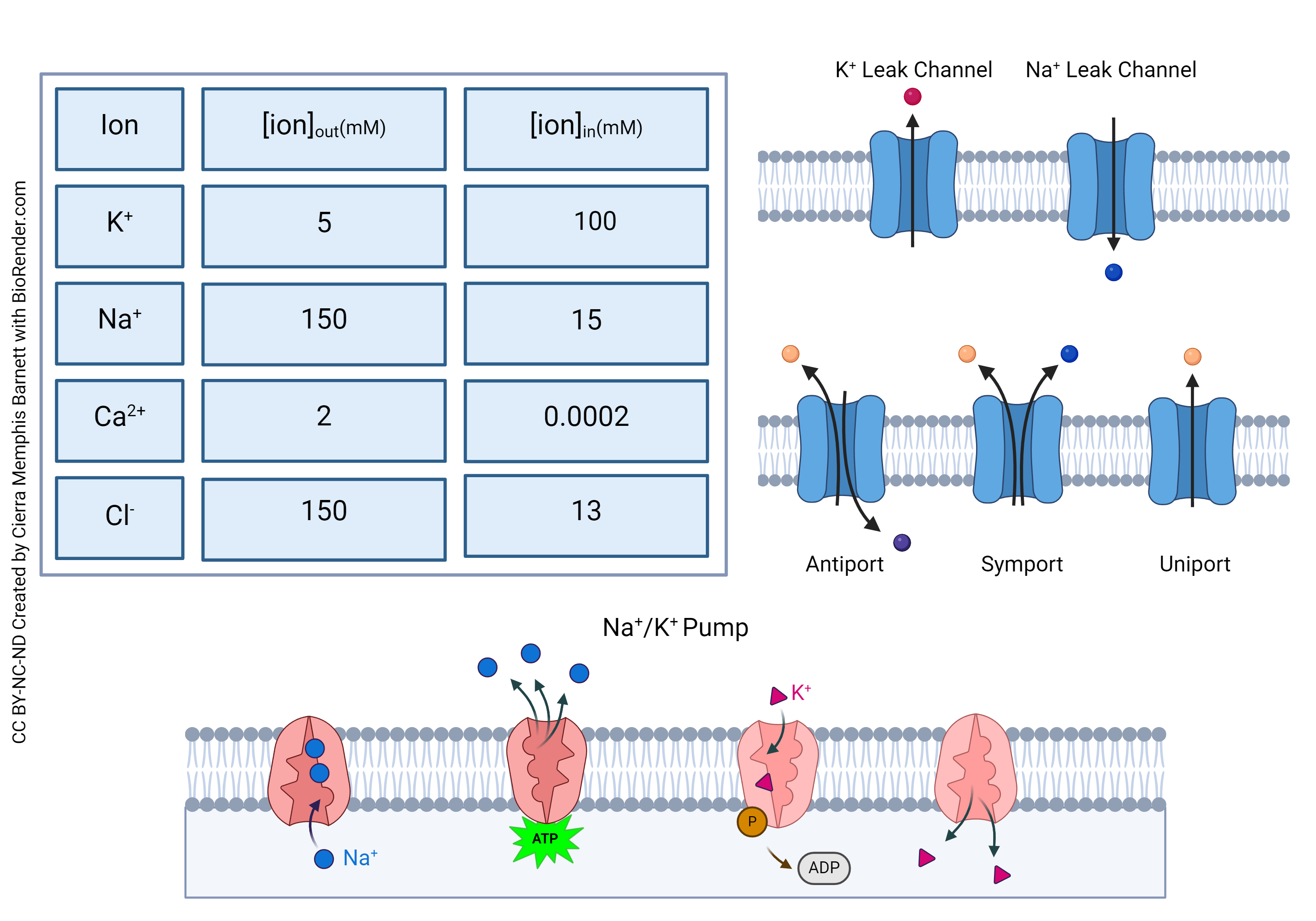
Remember that the concentration of Na+ and K+ (as well as other ions) is determined by the combined action of many different kinds of channels, transporters, and pumps. Through the action of these, the concentration of K+ (the words “the concentration of” are represented with square brackets, so symbolized [K+]) is 20 times higher inside the neuron than outside. We say
[K+]in > [K+]out
[Na+] is 10 times higher outside the neuron than inside (remember the outside is basically normal saline, 0.9% NaCl).
[Na+]in < [Na+]out
Diffusional Forces on Ions
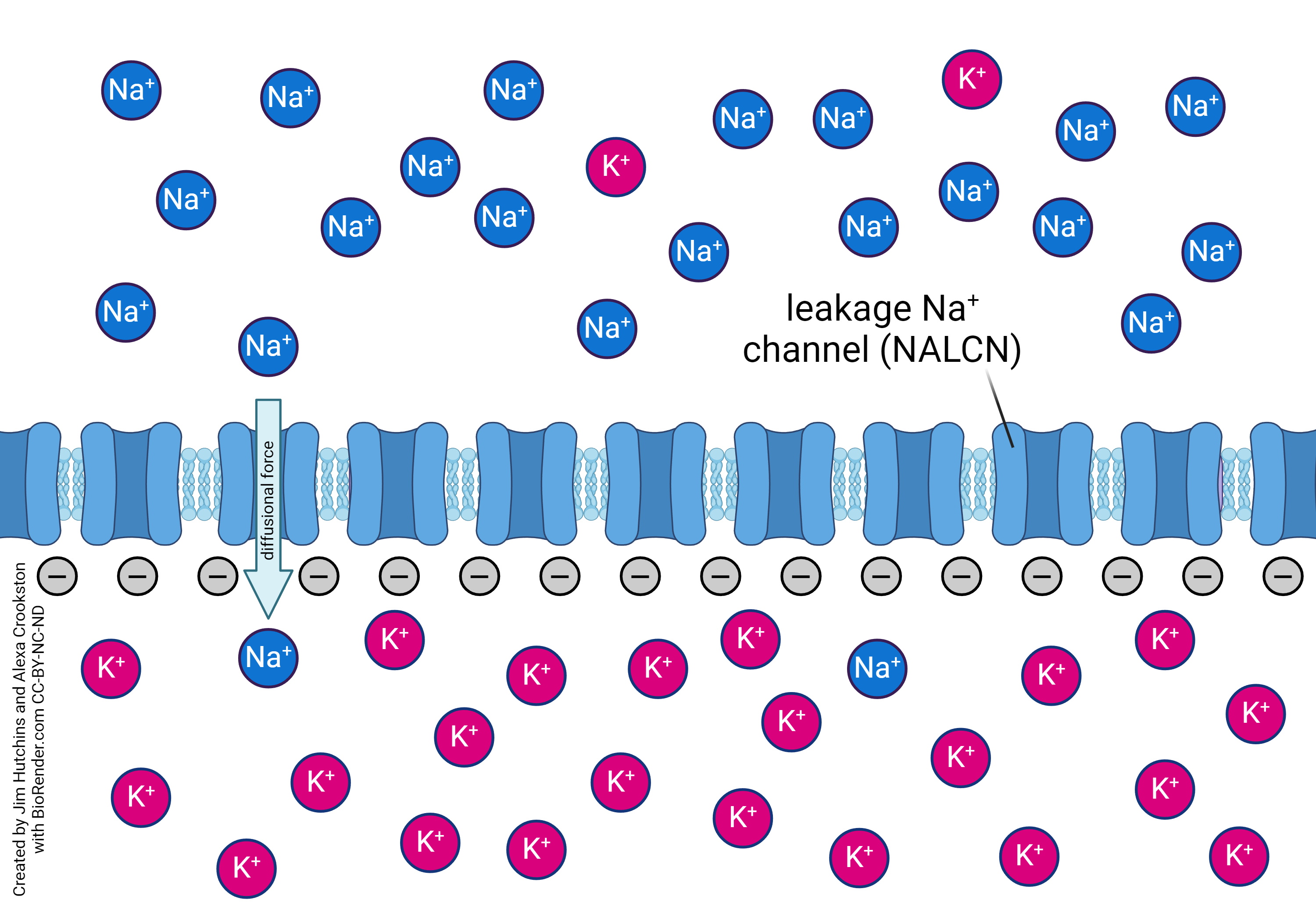
There is more sodium outside the neuron than inside. Therefore, if we just consider the diffusional force (which might also be called the concentration force or the chemical force), and we open a route for sodium to enter or leave, more sodium will enter the neuron than leave because any chemical substance moves from where it is at high concentration to where it is at low concentration, if it has a chance to move. This is a special case of the Second Law of Thermodynamics.
(As an aside, it’s important to note that ions are moving in both directions in all these descriptions, but we generally simplify the discussion by considering the net flux, that is, which direction of movement predominates. In real terms, a single electrical event in neurons represents an excess of 10,000 sodium or potassium ions moving in one direction or the other but that’s definitely not a number you need to know. Thus the net flux would represent 1,000,000 sodium ions moving inside and 990,000 sodium ions moving out.)
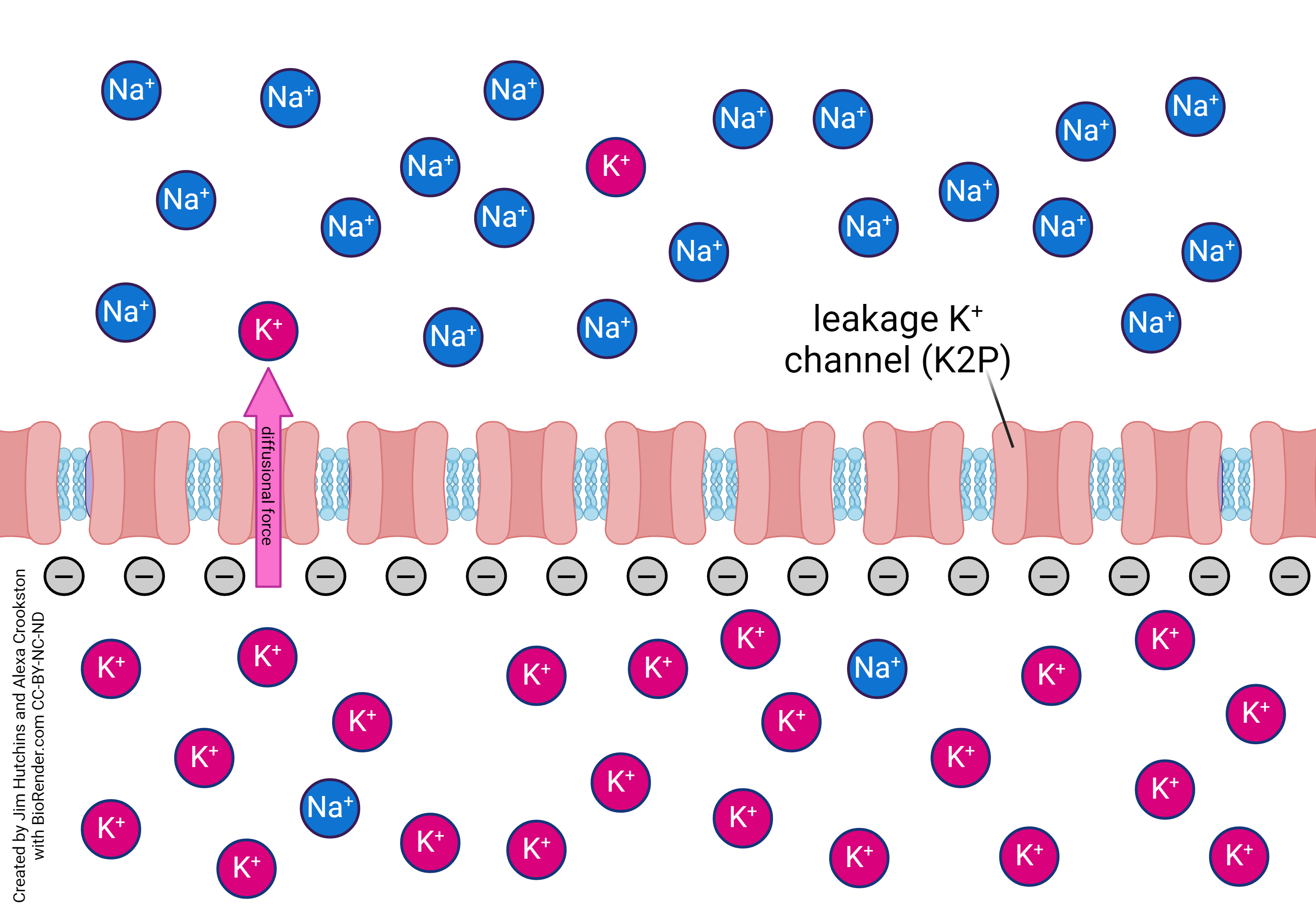
There is more potassium inside the neuron than outside. Therefore, if we just consider the diffusional force, and we open a route for potassium to enter or leave, more potassium will leave the neuron than enter because any chemical substance moves from where it is at high concentration to where it is at low concentration, if it has a chance to move.
To summarize, for the diffusional force considered in isolation,
Diffusional Force
sodium moves into the neuron
potassium moves out of the neuron
Electrical Forces on Ions
At the same time as there is a diffusional force, there is an electrical force (the same as electrical potential energy), because the particles that are diffusing are ions: that is, they have an electrical charge.
Let’s consider the electrical force in isolation. This one is much easier, because either the inside of the neuron has an excess of negative charges, or it has an excess of positive charges. In both cases, the ions we’re considering (Na+ and K+) are cations, or positively charged.
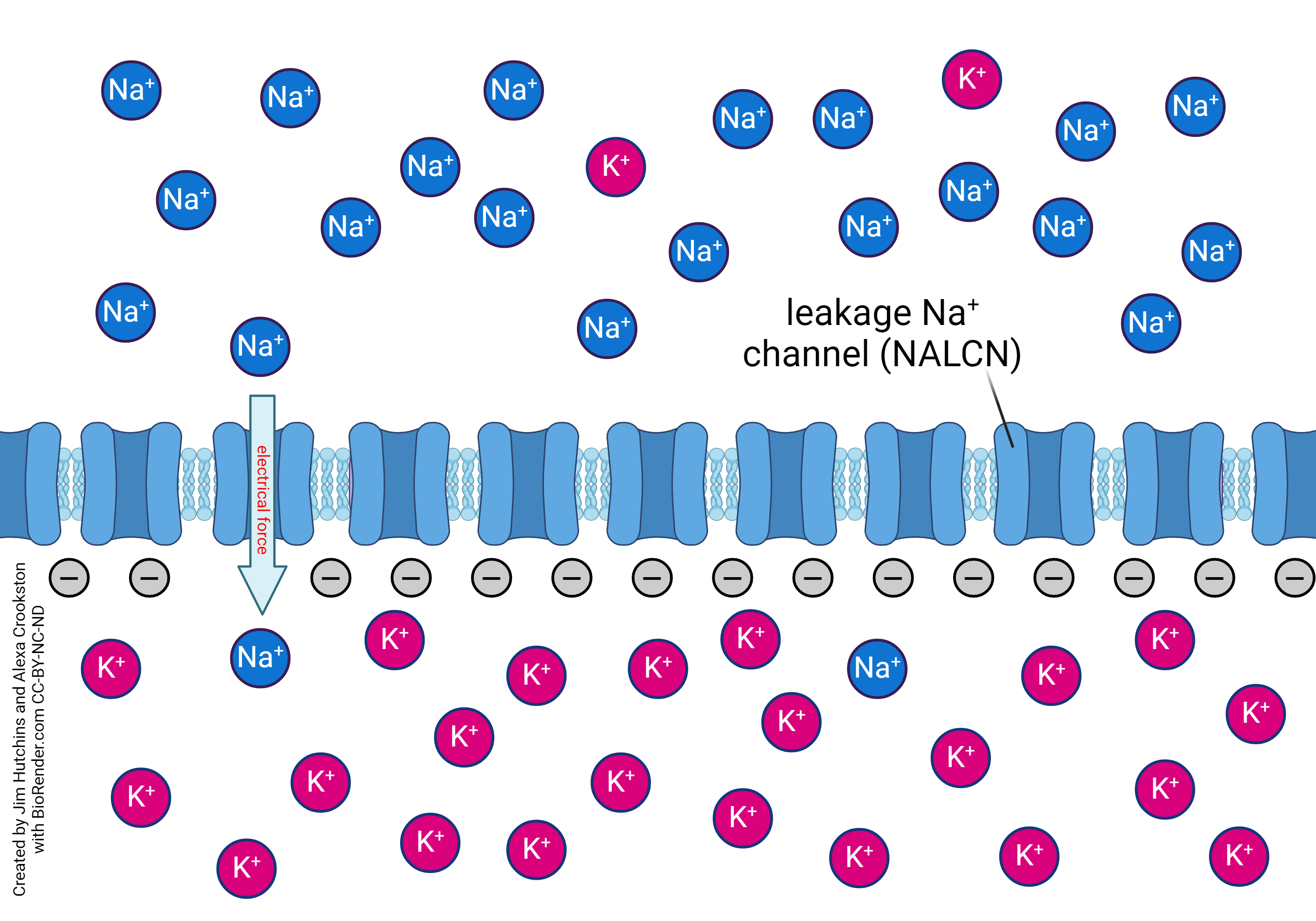
When the inside of the neuron is negatively charged, Na+ ions are attracted to the inside of the cell by the electrical force. The diffusional force is unchanged from the previous diagram, because the diffisional force is only a function of the concentrations of sodium outside and inside, not what’s going on with charges. K+ ions move the same way, so this is not shown in the diagram.
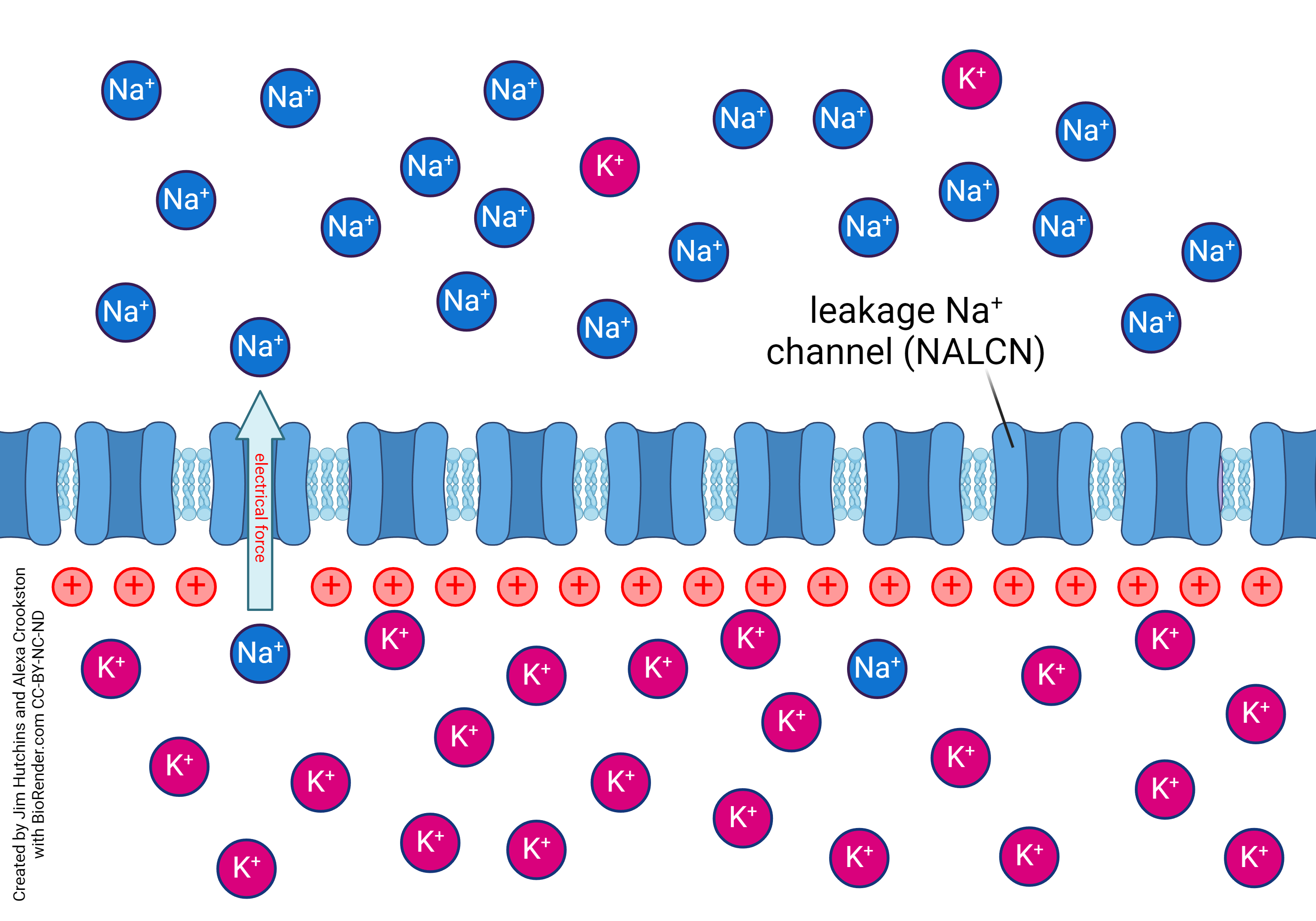
When the inside of the neuron is positively charged, Na+ ions are repelled from the inside of the cell by the electrical force. Note that only the electrical force “arrow” has changed direction. The diffusional force is not affected by electrical charge. K+ ions move the same way, so this is not shown in the diagram. (Remember that concentration doesn’t matter when we’re considering electrical forces; charge is the only relevant quality.) When the inside of the neuron is positively charged, both Na+ and K+ are repelled by the excess positive charges inside the cell and the net flux of both ions is out of the cell.
To summarize, for the electrical force considered in isolation,
Electrical Force
sodium & potassium move into the neuron when it is negatively charged
sodium & potassium move out of the neuron when it is positively charged
We’ve thought about diffusion forces and electrical forces separately. Now let’s combine them, taking one ion at a time.
These two panels depict the forces on potassium ions under two different conditions. The inside of the neuron is at the bottom, so the only change in conditions is the excess negative charges inside the neuron in the left panel and the excess positive charges inside the neuron in the right panel.
When the inside of the neuron is negatively charged, the diffusion force and electrical force are in opposition. The diffusion force wants to push potassium out. The electrical force wants to pull potassium in.
Who “wins” depends on the voltage (or potential), which represents the size of the electrical force.
The Equilibrium Potential
Now do a thought experiment. Imagine that we can set the voltage (potential) so that these two forces exactly balance each other out. We will call this the equilibrium potential (E).
The word “equilibrium” is Latin: æqui, “equal” + libra, “balance” (from which we get the astrological sign Libra, or the abbreviation “lb.” for “pounds”). The equilibrium potential, then, is literally when we get an equal balance of forces at a specific voltage.
Let’s re-examine the sodium image we saw above, but now consider the balance of forces.
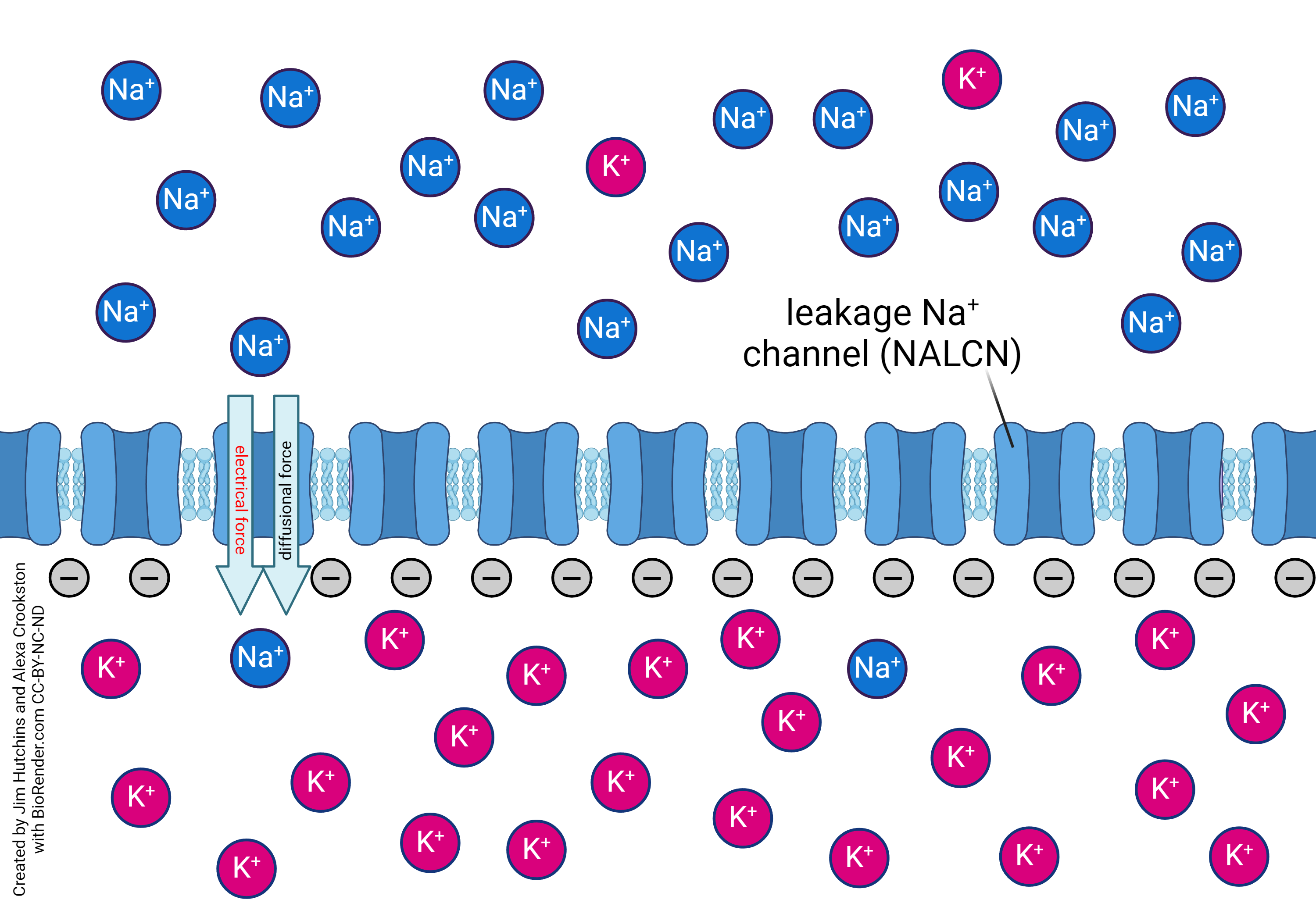
If the voltage inside the neuron is negative, then these forces can never be in balance. (Both arrows point in the same direction.) Sodium will want to enter the neuron based on the diffusion force. Sodium will want to enter the neuron even more based on the electrical force. No matter what, sodium is going to enter.
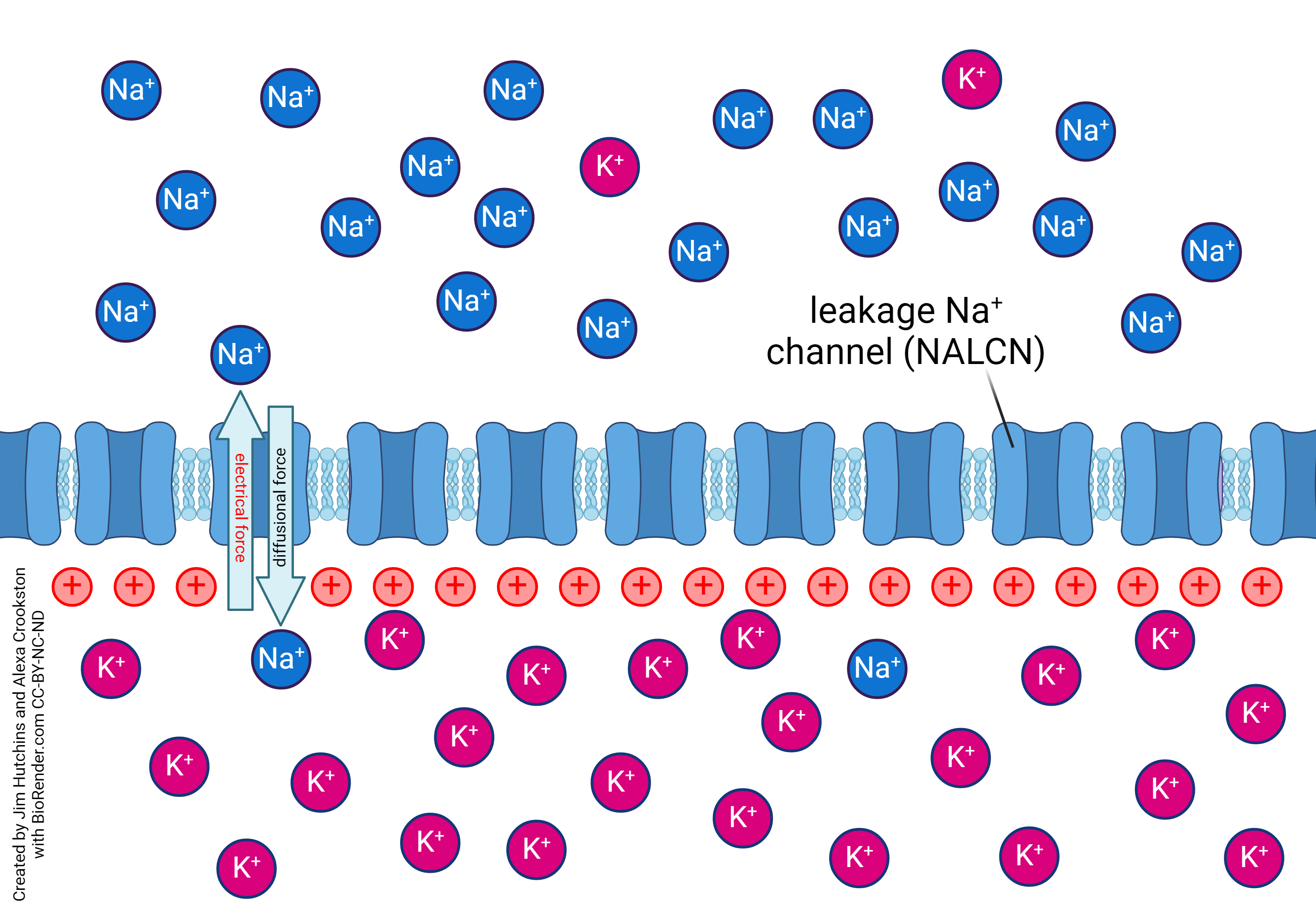
If the voltage inside the neuron is positive, then these forces can achieve a balance or equilibrium. (Arrows point in opposite directions.) The equilibrium potential for sodium (ENa) is typically about +60 mV. But don’t learn this number because very few neurons are typical. We just need a rough number to work with as we develop these ideas further.
Now let’s do the same thought experiment but with potassium ions.
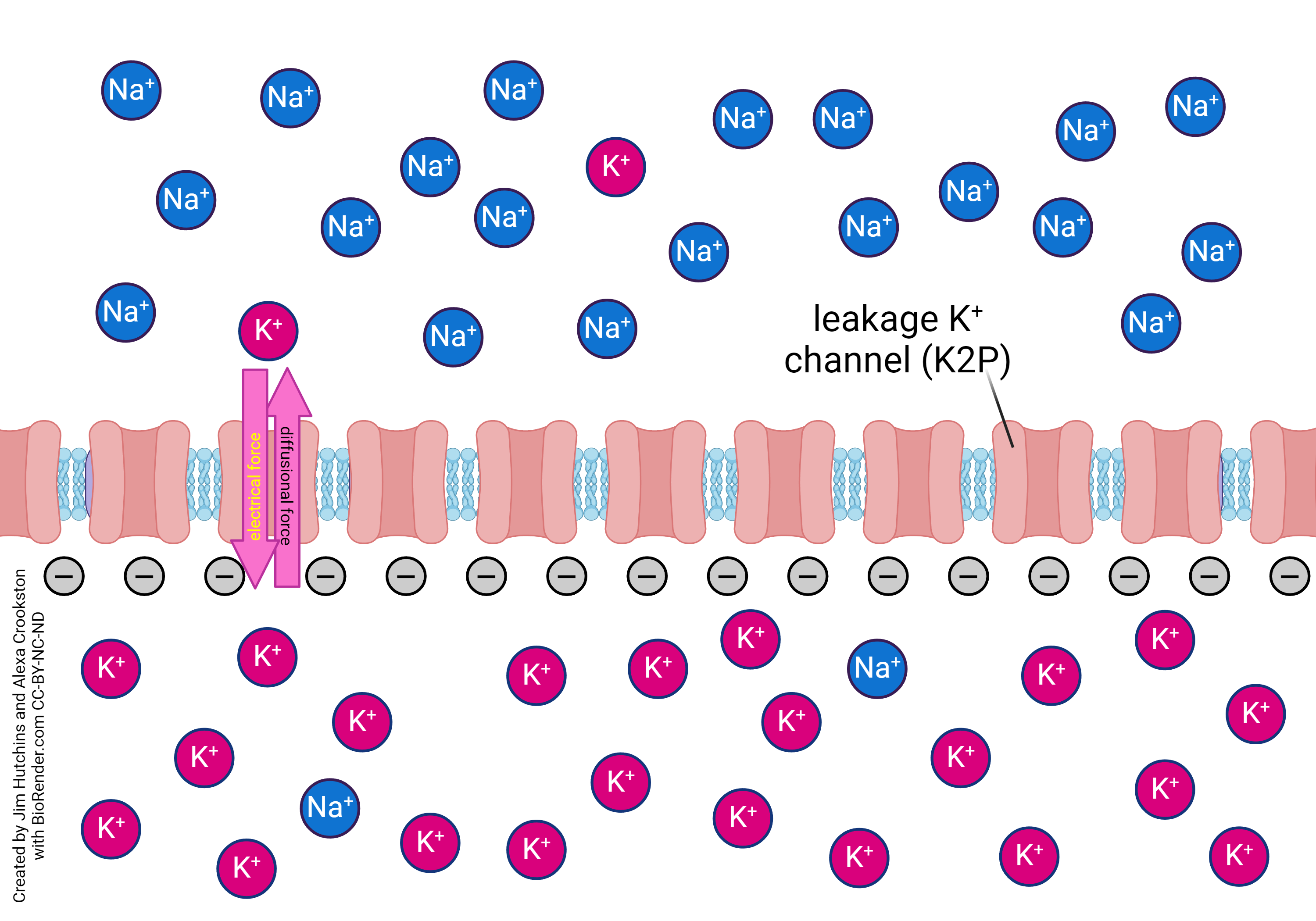
If the voltage inside the neuron is negative, then these forces can be in balance. Potassium will want to leave the neuron based on the diffusion force. Potassium will want to enter the neuron based on the electrical force. At some value of the membrane voltage, these forces are going to be balanced. The equilibrium potential for potassium (EK) is typically about –80 mV.
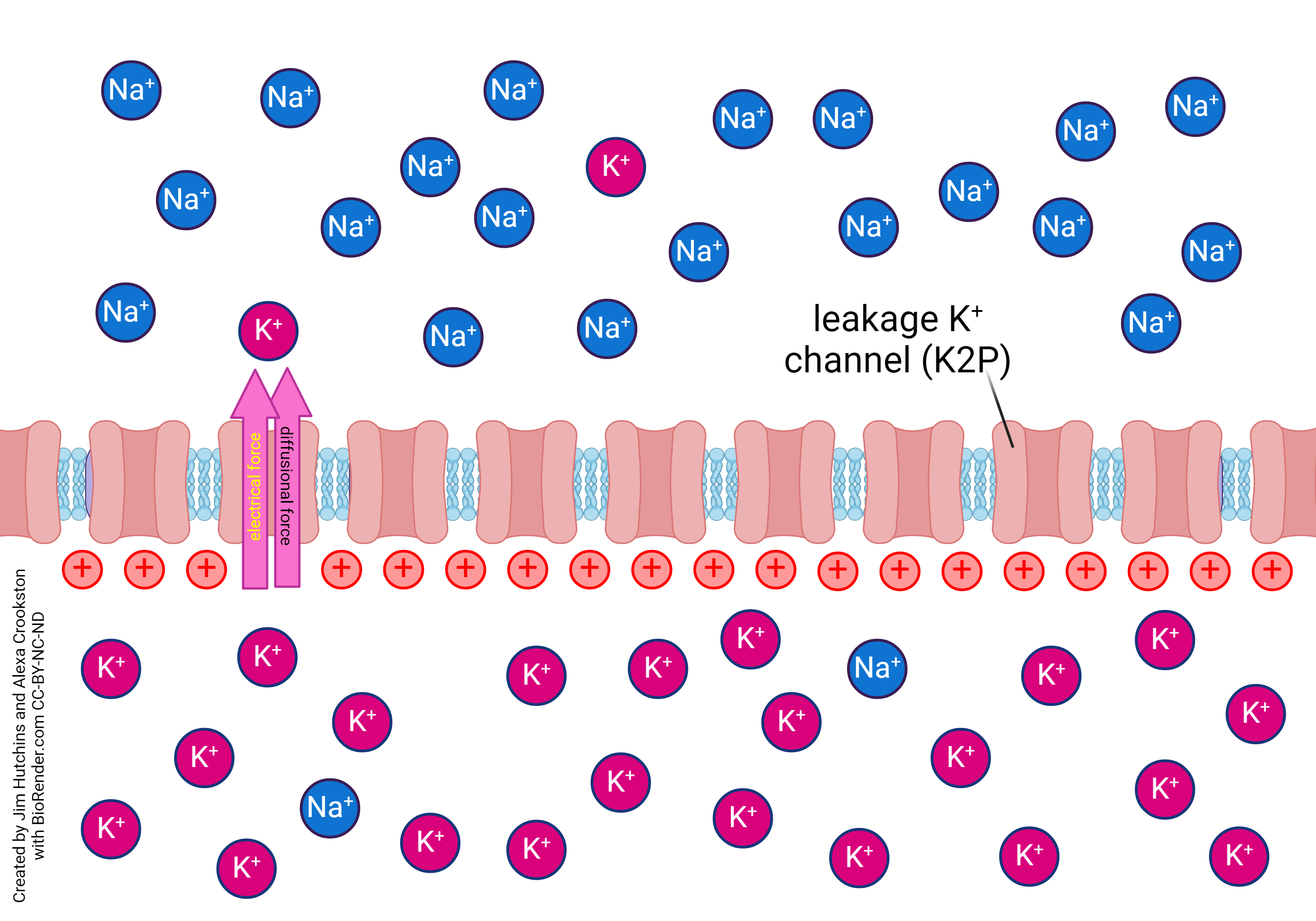
If the voltage inside the neuron is positive, then these forces can never be in balance. Potassium will want to leave the neuron based on the diffusion force. Potassium will want to leave the neuron based on the electrical force. No matter what, potassium is going to leave.
The Nernst Equation
The equilibrium potential for any given ion is given by the Nernst Equation, which requires a somewhat advanced knowledge of mathematics, so you can click on the link if you have a tolerance for math.
Media Attributions
- Pinewood derby cars © Joe Mabel is licensed under a CC BY-SA (Attribution ShareAlike) license
- Potential energy © Paul Peter Urone, Roger Hinrichs, Fatih Gozuacik, Denise Pattison, Catherine Tabor is licensed under a CC BY (Attribution) license
- Combined Effect of Ion Channels, Pumps, and Transporters © Cierra Memphis Barnett is licensed under a CC BY-NC-ND (Attribution NonCommercial NoDerivatives) license

